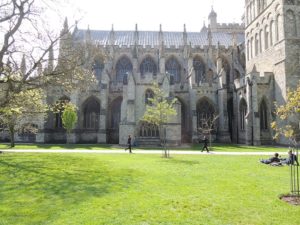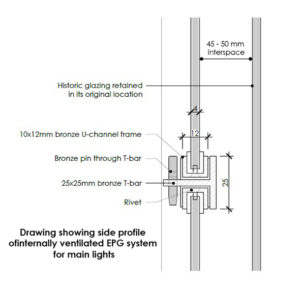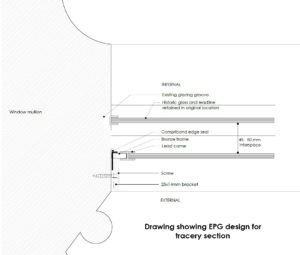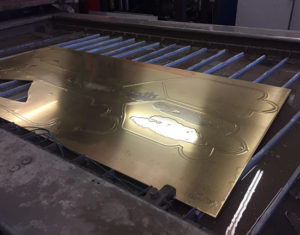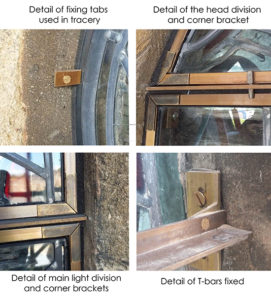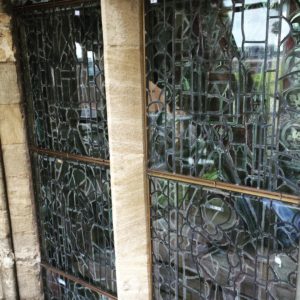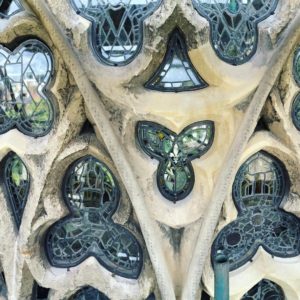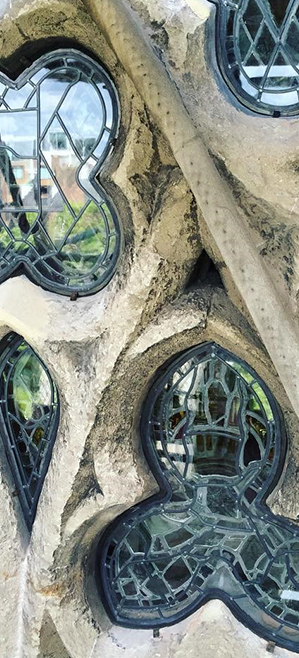
Exeter Cathedral, North Choir Clerestory Window
Environmental Protective Glazing
At the heart of this project was the restraint shown in carrying out in-situ conservation of stained glass and stonework: Pure Conservation. This involved close collaboration with cathedral architect Camilla Finlay and stone conservator Sean Clarke of Ellis & Co. It involved the design, manufacture and installation of a new internally ventilated Environmental Protective Glazing System (EPG) to all main lights and traceries following a trial installation to rehearse the aesthetic impact.
In-situ environmental monitoring was carried out before conservation, and continues after conservation treatment.
For the EPG, vents were introduced to allow the warmer air inside the building to flow into the interspace between the ancient glass and the new external screen. The bronze framework, fixed at the corners with our new in-house designed pressed bronze corner sections, is supported on a T-bars secured by custom-machined fixing pins. This is an easily reversible system, which allows simple access to the medieval stained glass for future maintenance. For the more complex shapes in the tracery section HWG refined our innovative water jet-cutting method, making the frames even more slender and discreet. The clerestory glazing is a prominent feature of Exeter Cathedral, beautifully proportioned and visible from the street. The treatment of the external glazing was critical in terms of the aesthetic impact of the project, and this is why it was important to set up visual trials as well as the Environmental Monitoring Programme. The project is a model for minimum necessary intervention, and careful aesthetic evaluation supported by environmental monitoring.
Click here to see more about this project:-
http://www.holywellglass.com/work/exeter-cathedral/



